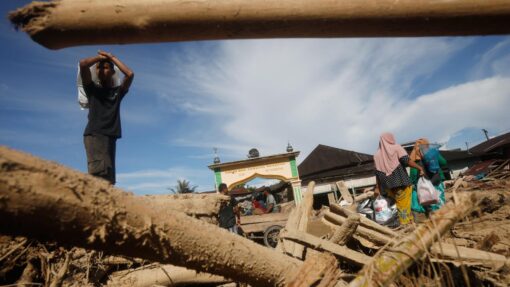Shelling near Ukraine reactor ‘close call’
Pavel Polityuk |
Ukraine has narrowly escaped disaster during fighting that rocked Europe’s largest atomic power plant with a barrage of shells, some falling near reactors and damaging a radioactive waste storage building, the United Nations nuclear watchdog says.
It was not clear which side was responsible for the explosions at the Zaporizhzhia nuclear power station, which has been under Russian control since soon after it invaded Ukraine on February 24.
Whoever fired on the plant was taking “huge risks and gambling with many people’s lives,” director general of the International Atomic Energy Agency (IAEA) Rafael Grossi said.
“We were fortunate a potentially serious nuclear incident did not happen. Next time, we may not be so lucky,” Grossi said late on Sunday in a statement, describing the situation as a “close call”.
Repeated shelling of the plant during the war has raised concern about a grave disaster in the country that suffered the world’s worst nuclear accident, the 1986 Chernobyl meltdown.
Radiation levels remained normal and there were no reports of casualties, the IAEA said.
While there was no direct impact on nuclear safety and security systems, “the shelling came dangerously close to them”, Grossi said.
The shelling came as battles raged further east following troop movements from around Ukraine’s recently recaptured Kherson, further south along the same Dnipro river on which Zaporizhzhia is located.
Russia’s response to its military setbacks has included a barrage of missile strikes, many on power facilities that have left much of the country without electricity as winter sets in and temperatures drop below freezing.
Both sides traded blame for the latest shelling, as they have done repeatedly in recent months after attacks on the plant or near it.
Citing information provided by plant management, an IAEA team on the ground said damaged infrastructure included a radioactive waste and storage building, cooling pond systems, a cable to one of the reactors and a bridge to another reactor and auxiliary buildings.
The team will conduct an assessment on Monday, Grossi said, but Russian nuclear power operator Rosenergoatom said there would be curbs on what they could inspect.
“If they want to inspect a facility that has nothing to do with nuclear safety, access will be denied,” Renat Karchaa, an adviser to Rosenergoatom’s CEO, told the Tass news agency.
The Zaporizhzhia plant provided about a fifth of Ukraine’s electricity before Russia’s invasion and has been forced to operate on backup generators a number of times.
The plant’s six Soviet-designed reactors are shut down but there is a risk nuclear fuel could overheat if the power driving the cooling systems is cut.
Shelling has repeatedly cut power lines.
Russia’s defence ministry said Ukraine fired shells at power lines supplying the plant.
Ukraine’s nuclear energy firm Energoatom said Russia’s military shelled the site, accusing it of nuclear blackmail and actions “endangering the whole world”.
In eastern Ukraine, Russian forces battered Ukrainian frontline positions with artillery fire, with the heaviest attacks in the Donetsk region, Ukraine’s President Volodymyr Zelenskiy said in a video address on Sunday evening.
“The fiercest battles, as before, are in the Donetsk region. Although there were fewer attacks today due to worsening weather, the amount of Russian shelling, unfortunately, remains extremely high,” Zelenskiy said.
Reuters


